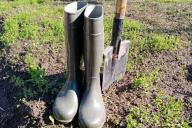Warm sun rays awaken not only plants, but also pests.
While the currant is accumulating strength for a new harvest, its bushes become an ideal target for insects.
Some will say that this is inevitable, but is it worth putting up with?
Pests and fungal diseases can literally destroy the plant before the first berries appear. Spring treatment allows you to:
1. reduce the number of pests that overwinter in the soil or on bushes;

2. strengthen plant health;
3. increase crop yields.
It is better to prevent a problem than to deal with the consequences. Therefore, it is important to pay attention to prevention in the spring.
Before you start processing, it's worth getting to know your enemies better:
- kidney mite - affects the kidneys, they become large and stop developing;
- aphids - suck the juice from young leaves, causing them to deform;
- gall aphid - leaves red swellings on the leaves;
- glassworm - caterpillars eat branches from the inside, which makes the bush fragile.
Each of these pests is dangerous, so fighting them requires an integrated approach.
Spring processing is divided into several stages:
1. Early stage - before bud break. It is at this moment that wintering pests are destroyed.
2. Period of active growth – treatment is aimed at protecting against new threats.
How to treat bushes
1. Boiling water. A simple and affordable method that destroys pest eggs. You just need to pour hot water (60–70 °C) from a watering can over the bushes
2. Copper sulfate. The solution is used to combat fungal diseases. Dilute 100 g of the substance in 10 liters of water and spray the bushes
3. Urea. An excellent preparation for destroying pests. It also serves as a nitrogen fertilizer.
4. Ash solution. A folk method that helps get rid of aphids. An infusion of 300 g of ash per 10 l of water is used for spraying.
5. Insecticides. Modern preparations for pest control. Choose biological means so as not to harm the environment.
The success of pest control depends not only on the choice of the product, but also on its correct application:
1. Use sprayers to distribute the solution evenly.
2. Treat the bushes in dry weather so that rain does not wash away the preparation.
3. Don't forget about safety: wear gloves and a mask.








